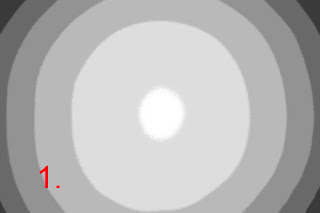
There are three controls commonly used to select what is in focus in an image: selecting what the lens is focused on (obviously); varying the aperture to control the depth of field; and tilting the plane of focus (via tilt/shift controls on a view camera or a PC lens on a SLR). Using these, even combined, sometimes won't create what you want. Suppose you want a fairly deep zone in focus and everything else way out of focus. The aperture control can give you a deep zone of focus when stopped way down but it either may not be enough or it may make other elements sharper than you want. If you open the aperture up, you get the nice unfocused surroundings but with a very shallow zone that's in focus. We want to get the best of both extremes.
This is where focus stacking comes in. Focus stacking entails taking several identically-exposed images from the same vantage point, but with each one focusing to a different depth of the subject you want in focus. Specialized software then combines the images, selecting the sharpest portions of each image and creating a single image with often remarkable depth of field. Focus stacking is commonly used in macro- and microphotography where depth of field is miniscule even with the aperture closed way down.
You can use focus stacking in a slightly different way. Open your aperture way up (giving a very shallow depth of field and nice unfocused surroundings) and shoot several images varying the focus through the depth of the region you want in focus. Combine with focus stacking software and you can get an image with the main subject in sharp focus front to back, and the surrounding depth nicely out of focus.
The example image of a rose blossom on a piano keyboard was shot with 5 exposures with focus ranging from the near tips of the petals, to the far edges of the sepals behind the blossom. The 50 mm lens was wide open at f/1.4 for these exposures giving a very soft image except for the vary shallow zone of focus where the lens was focused in each image. Combine the stack in the software and you get the rose blossom and sepals razor sharp front to back with everything else nicely blending to gauzy tones. You won't be able to get this effect in any other way.
This particular image was created using the freely-available CombineZM focus stacking software, but there are several other choices of software that can do the same thing.




No comments:
Post a Comment